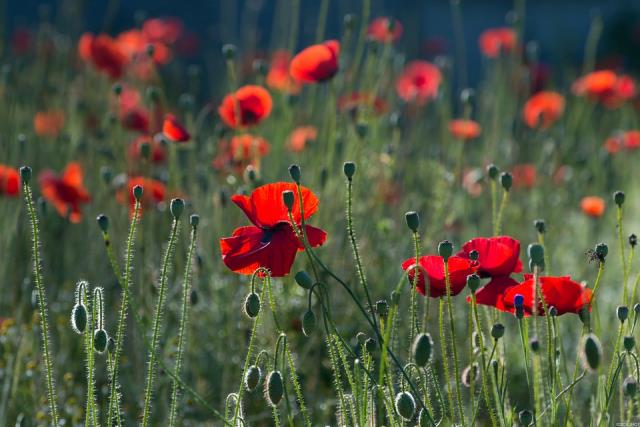By Beatrice Hawkins
FREE Times gardening columnist BEATRICE HAWKINS reflects on the significance of the poppy, with Remembrance Day approaching.
TOMORROW, 11th November, is Remembrance Day, a time to reflect on the sacrifices made so we can enjoy the freedoms and lifestyle we do in this wonderful country.
It is a time to pause at 11am on the 11th day of the 11th month and spend one minute in silent contemplation and appreciation.
At this time we see black centred red poppies everywhere as symbols of the bloodshed in the fields of Europe all those years ago.
The first person to use this poppy as a symbol of remembrance after reading Lieutenant-Colonel John McRae’s poem In Flanders Fields was Moina Belle Michael at YMCA Overseas War Secretaries headquarters in New York.
She was so moved by the poem she pledged to wear a poppy as a symbol.
Many others seeing her, asked for similar poppies to wear. From this small beginning the symbol has been adopted by many countries that lost young men at Gallipoli and in Europe where the poppy grows prolifically in cultivation paddocks.
The horticultural society bus trip to Stanthorpe on 18 November will be going to Fay Helwig’s beautiful garden and poppy fields as well as other interesting destinations.
Until this year I have never grown poppies but spread some seed that my granddaughter collected for me of the beautiful double pink Flemish poppies.
I was very late in sowing them so as yet have no flowers but the plants are doing well and I look forward to late blooms.
Poppies come in many types from single Iceland varieties to big double Flemish ones in a variety of colours, the special red Flanders poppy to opium poppies grown under licence in Tasmania and, of course, the many colours of the hardy Californian poppies that easily naturalise and look great.
All but the Californian poppy make great cut flowers and last well if you burn the cut stem ends.
They are all easy to grow, like full sun and free draining soil and look great in a spring/summer garden so plan a spot for some for next spring.
Poppies have happy memories of a favourite aunt who lived down the road from me. As a very small child I remember Aunty Edna growing great displays of Iceland poppies.
I also have distinct memories of her son and I at about three or four years old picking a bud from each of the plants before they came out and, very carefully, laying them out on sheets of newspaper under the house and proceeding to open the buds to see what colours they were – we had sticky tape on hand ready to reattach them to the plants when our curiosity had been satisfied!!
The amazing thing is I have no memory of any punishment from this endeavour, I can only assume Aunty Edna was a very forgiving lady!
At present, along with many of you, I suspect, I have a terrible problem with caterpillars of all types that are decimating vegies and flowers alike in my garden.
I have sprayed with a white oil and systemic insecticide but have hardly made a dent in their numbers.
I spend a lot of time picking them off manually and destroying them – they are even eating the rhubarb leaves!
Anyone with a hint on what to do to control these pesky, destructive critters please let me know.
Also a problem is arising with the black African lawn beetle.
I really don’t like using sprays, particularly on vegetables, so any old fashioned remedies would be appreciated to hawkins.beatrice@yahoo.com.
Don’t forget the Stanthorpe bus trip. It is sure to be a great day out.
*This is an old article that has been digitised so our readers have access to our full catalogue.







